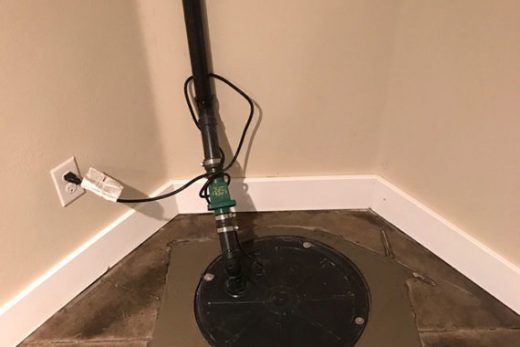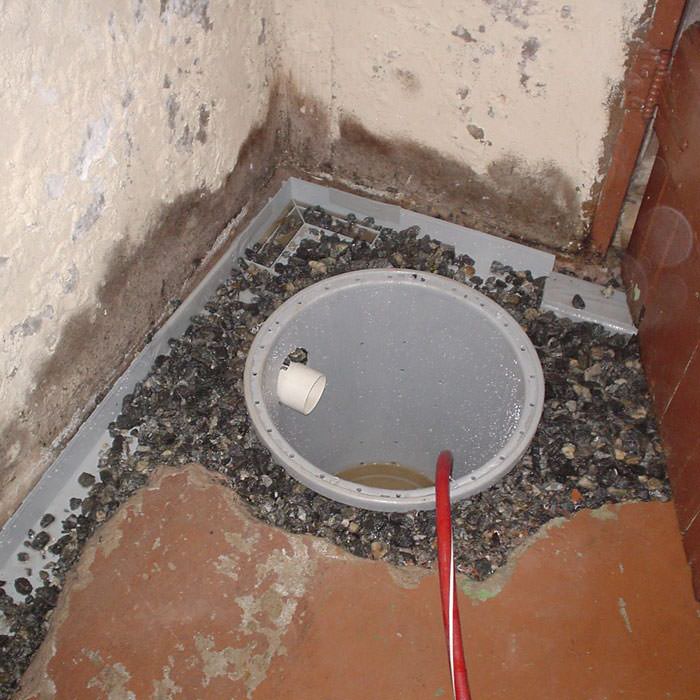Clear Instructions for Caring for a Sump Pump
Clear Instructions for Caring for a Sump Pump
Blog Article
Do you find yourself searching for know-how about How to Care for Your Sump Pump?

Sump pumps are crucial components in many homes, particularly in locations prone to flooding or excessive dampness. They help prevent water damage by effectively eliminating excess water from basements or crawl spaces. Nevertheless, like any other appliance, sump pumps call for normal maintenance to ensure they function successfully when needed the most. Cleansing your sump pump is an essential part of its maintenance, and recognizing exactly how to do it appropriately can conserve you from expensive repair services and possible disasters.
Introduction
Maintaining a clean sump pump is vital for its proper functioning and durability. Ignoring this vital task can result in clogs, breakdowns, and eventually, water damage to your home. As a result, learning just how to clean a sump pump is vital for homeowners that rely on these gadgets to keep their basements completely dry and protected.
Indications of a Dirty Sump Pump
Understanding when your sump pump needs cleaning is important for avoiding possible malfunctions. Some usual indications that indicate a dirty sump pump include strange noises during procedure, minimized water flow, and visible particles in the pit. If you notice any one of these signs, it's essential to clean your sump pump without delay to avoid any further issues.
Preparing for Cleaning
Prior to you begin cleansing your sump pump, it's vital to take some safety and security preventative measures. Start by shutting off the power to the pump to avoid any electrical accidents. Furthermore, put on proper safety equipment, such as gloves and goggles, to shield yourself from dirt, debris, and possible pathogens.
Comprehending the Sump Pump
Before diving into the cleaning procedure, it's vital to have a standard understanding of exactly how a sump pump works. Commonly installed in a pit or container below the cellar flooring, a sump pump includes several essential elements, including a pump, a float button, and a discharge pipe. When water collects in the pit, the float switch activates the pump, which after that pumps the water out with the discharge pipeline, away from the building's structure.
Step-by-step Guide to Cleansing a Sump Pump
Shutting down the Power
Begin by disconnecting the power supply to the sump pump to stop any type of mishaps while cleansing.
Looking For Proper Functioning
Before reinstalling the pump, execute a fast examination to guarantee that the float switch activates the pump appropriately. Put some water right into the sump pit and observe the pump's procedure. If whatever is working properly, you can rebuild the pump and reconnect the power supply.
Getting Rid Of Debris and Dust
Utilize a bucket or a scoop to get rid of any type of noticeable debris, dust, or sediment from the sump pit. Dispose of the particles appropriately to prevent it from obstructing the pump or the discharge pipeline.
Cleansing the Pump and Float Switch Over
Once the pit is clear of particles, very carefully get rid of the pump from the pit. Examine the pump and the float switch for any kind of indicators of damage or wear. Use a soft brush or fabric to cleanse the surfaces and eliminate any type of built up grime.
Purging the System
After cleansing the pump and float button, flush the sump pit with clean water to remove any remaining dust or sediment. This will certainly assist make sure that the pump runs smoothly and successfully.
Upkeep Tips to Keep Your Sump Pump Clean
In addition to regular cleansing, there are numerous upkeep suggestions you can follow to maintain your sump pump in optimum problem:
Verdict
Cleaning your sump pump is a vital element of its upkeep and guarantees that it operates effectively when you require it one of the most. By adhering to the actions outlined in this guide and integrating normal upkeep into your routine, you can expand the life-span of your sump pump and safeguard your home from water damage.
6 STEPS ON HOW TO CLEAN A SUMP PUMP PROPERLY
UNDERSTANDING SUMP PUMPS
Your sump pump plays a crucial role in protecting your home by managing and removing excess water. It primarily functions as a “shield”, guarding your basement against the damaging effects of water accumulation. The pump is housed in a sump pit in the lowest part of your basement, and its job is to pump out any water that collects there.
During heavy rainfalls or when snow melts rapidly, water can infiltrate your basement, posing potential risks like flooding, structural damage, and harmful mold growth. Here, the sump pump springs into action, pumping out the intruding water and directing it away from your home.
SAFETY FIRST
Before cleaning, remember to prioritize safety. Disconnect the sump pump from the power source to prevent any accidental electric shocks. Also, wear sturdy gloves to protect your hands from any sharp or dirty components within the pump.
REMOVE THE SUMP PUMP
After ensuring your safety, the next step is to remove the sump pump from its pit. Doing this might require careful maneuvering as you don’t want to damage any pump components. Once removed, clean the sump pit to remove any accumulated debris or sludge.
INSPECT THE PUMP
Inspect the pump for any visible signs of wear or damage. Check the power cord, float switch, and impeller housing. If any components look worn out or damaged, consider replacing them to ensure optimal performance.
CLEAN THE PUMP
Thoroughly clean the pump with warm, soapy water. Make sure to rid it of any dirt, gravel, or other debris that might impede its performance. You can use a toothbrush to clean the small, hard-to-reach parts of the pump.
REINSTALL THE SUMP PUMP
Reinstall the pump into the sump pit Make sure it’s positioned correctly to remove the water effectively Once it’s back in place, reconnect it to the power source TEST THE PUMP
Finally, pour some water into the pit to ensure the pump works correctly. It should start automatically and begin pumping out the water; if it doesn’t, check the power source and the positioning of the pump.
Remember, while cleaning your sump pump is an essential part of home maintenance, hiring a professional plumber for a thorough inspection and cleaning at least once a year is also important. This will ensure that your pump is in optimal condition, ready to protect your home from potential water damage.
BEST PRACTICES FOR CLEANING SUMP PUMP DISCHARGE PIPES
Regular Inspection: Regularly inspect your discharge pipes, especially during heavy rainfall or snowmelt periods. Look for any signs of blockage or damage. Early detection of problems can prevent serious issues down the line. Periodic Cleaning: Over time, sediment and debris can accumulate in the discharge pipes, impeding the flow of water. Regular cleaning helps keep the pipes clear and functioning efficiently. You can use a high-pressure water jet to effectively clean the pipes. Insulation During Winter: In colder climates, discharge pipes can freeze, blocking the outflow of water. Protect your discharge pipes from freezing temperatures by insulating them with foam pipe insulation. This will ensure the sump pump can continue to discharge water even in freezing conditions. Proper Positioning: The discharge pipe should be positioned to direct water away from your home’s foundation. Improper positioning can lead to water seeping back into the basement. Ensure the pipe is long enough and angled correctly. Installation of a Check Valve: A check valve prevents water from flowing back into your sump pit after the pump has pushed it out. Installing a check valve helps maintain the efficiency of your sump pump and reduces the risk of flooding. Minimize Pipe Turns: Every curve or turn in the discharge pipe can decrease the efficiency of water flow. By minimizing turns and bends in your discharge pipe, you can increase the efficiency of your sump pump. https://www.fullspeedplumbing.com/how-to-clean-a-sump-pump-properly9999/

Do you enjoy reading up on Steps to Cleaning Your Sump Pump Properly? Give a review directly below. We will be pleased to know your opinion about this post. Hoping that you come back again before long. You should pause to promote this entry if you appreciated it. Thanks a lot for being here. Come back soon.
Schedule Report this page